I recently spent a long weekend in the Italian region of Emilia-Romagna, driving a fast car, eating tortellini alla panna twice a day and rifling through Luciano Pavarotti’s DVD library. The tenor’s house, outside Modena, has been converted into a museum filled with his many shiny awards and Hermès scarves, framed photos with Bono and Mandela and, yes, his unrivalled collection of Police Academy movies.
I also visited Modena’s sprawling San Cataldo cemetery to see the imposing family tomb of one Enzo Anselmo Giuseppe Maria Ferrari, 1898-1988. I listened carefully. It was peaceful. Apart from birdsong, not a whisper. There was no whirring, no drilling, no vibration or rumbling from underground. Everybody said he’d be spinning in his grave. Talk about a let-down. It turns out Enzo Ferrari, il Commendatore, the most famous and feared sports car builder in history, is just fine with a Ferrari Sports Utility Vehicle.
Ferrari specifically say ‘don’t call it an SUV’, but I’m afraid there’s no way around it. It is an SUV. ‘Super’ SUVs are not new. Supercar manufacturers have been blending their genes with that of the Range Rover for several years now. See the Aston Martin DBX and Lamborghini Urus, and the slightly less exotic offerings of Maserati, Bentley and Porsche (which now sells four times as many SUVs as 911s). They’ve recognised that the nouveau riche love these supercar brands, and they love luxury SUVs even more. And there’s a ton of profit in that.
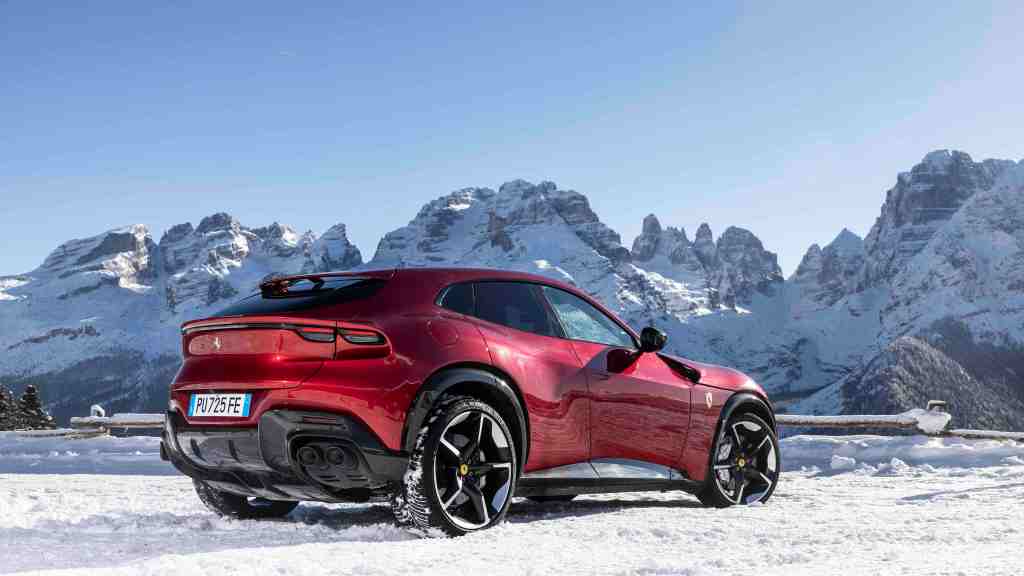
Of course, a big, heavy car with four-wheel drive and a high centre of gravity is not a sports car. Not until you put so much power under the bonnet, over-engineer every mechanical part and stick it on the styling hormones; then it self-identifies as a sports car and woe betide anyone who says otherwise.
The figures certainly meet the supercar threshold: the £190,000 697bhp Aston DBX707, which was, until now, the most powerful of the genre, hits 60mph in 3.1 seconds as it limbers its way up to 193mph. But this 2,300kg beast looks bloated and ungainly, and all the spoilers and intakes and bits of carbon-fibre only serve to make it more ridiculous, like Mr Creosote in spandex and running spikes.
This is why, when Ferrari revealed in September 2018 that it would join the competition in building a high-performance high-sider (or, in their words, ‘a Gran Turismo crossover’), I, a red-blooded Ferrari fan, felt my heart sink. It was lifted, slightly, by the name: Ferrari Purosangue – pron. ‘puro-sang-way’. It’s a fabulous name. The best since Testarossa (redhead). It means ‘pure blood’ in Italian, or ‘thoroughbred’, which is fitting for a marque whose symbol is the prancing horse. Makes you wonder why it’s taken them 76 years to use it. It seems they were waiting for a challenge and to goad the naysayers. Is the Purosangue a real Ferrari? I went to the Dolomites last week to find out.
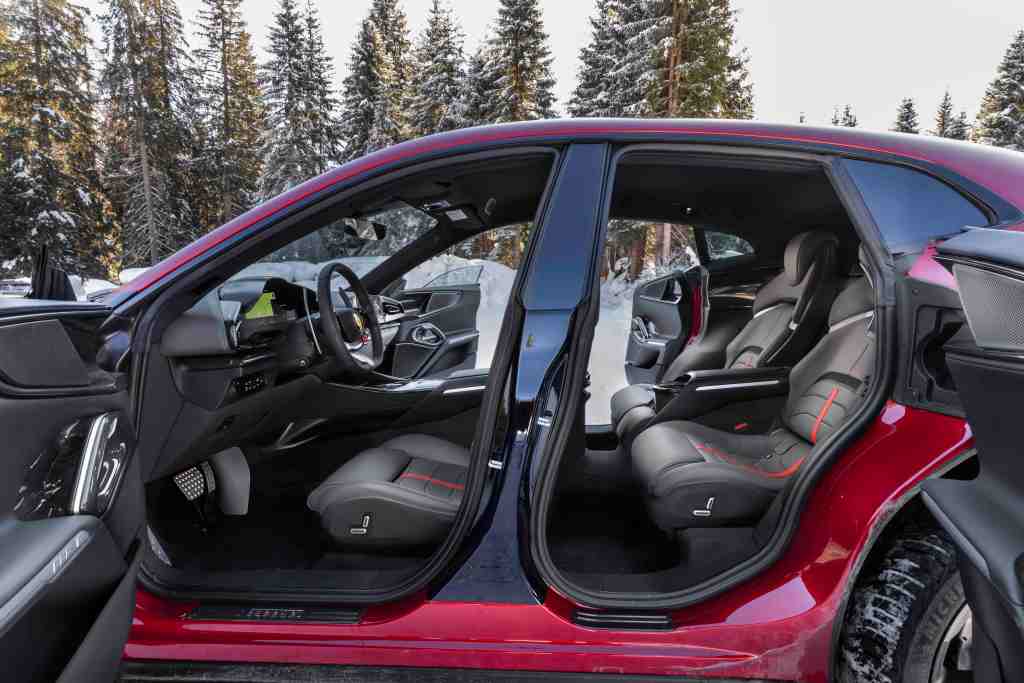
This was the first hint that Ferrari are marketing this car a little differently to the norm. Car companies, be they Skoda or Porsche, usually put lucky journalists like me up in fancy hotels: somewhere that reflects where they’re trying to place their brand or model in people’s imaginations. It’s normally somewhere contemporary, filled with jet-set art and sustainable materials, and increasingly they might try to foist a vegan tasting menu on their guests after the product briefing. But Ferrari never bother with any of that. They’ll put us in a generic business hotel beside a motorway and let the car speak for itself. A Ferrari, they believe, doesn’t require the additional allure of an Aman or some molecular gastronomy. I’ve been on Ferrari launches where the cutlery is plastic. The product briefing? They shirk glossy lifestyle videos for lengthy technical slides and diagrams one needs at an engineering degree to understand. I find there’s a certain haughty charm in all of this.
For the Purosangue, though, they pulled out all the stops. Our five-star alpine retreat, the Lefay in Pinzolo, boasts one of the biggest hotel spas in Europe. Ergo, steam rooms and pillow menus will be of priority to the customers they envisage for the Purosangue. Different to the F40, in other words, which will have been christened at a race track with polystyrene cups.
The Ferrari PR tells us the police are aware of what we’re doing here in Madonna di Campiglio. In other countries that would be a threat. In Italy, on a Ferrari launch, it’s a reassurance
Right, that’s enough cynicism. Let’s take a look at this thing. The Ferrari Purosangue is, in my opinion, utterly sensational to behold. Ferrari (led by urbane chief designer Flavio Manzoni, who practices architecture in his spare time and cites sculptor Constantin Brâncusi as his hero) avoided the pitfalls of their rivals and have created something cohesive. It’s a high-riding and roomy GT that’s just the right parts aggressive and elegant; well proportioned; innovative in its aero without being nerdy; and, crucially, masking its girth so that it looks lissom and genuinely athletic. It is 3cm shorter than the DBX and 13cm shorter than the Urus, yet it’s wider than both which gives it a very four-square stance, accentuated by its short, brawny overhangs and big wheels.
There are familial nods to other cars in the Maranello model line-up: the SF90 at the front, the 296 at the rear, maybe a bit of 812 and Roma in the middle, references to the Daytona of the late 1960s and early 1970s, and an overall Berlinetta shape. This was one of the most high-wire automotive briefs of the past half-century, and they’ve nailed it.
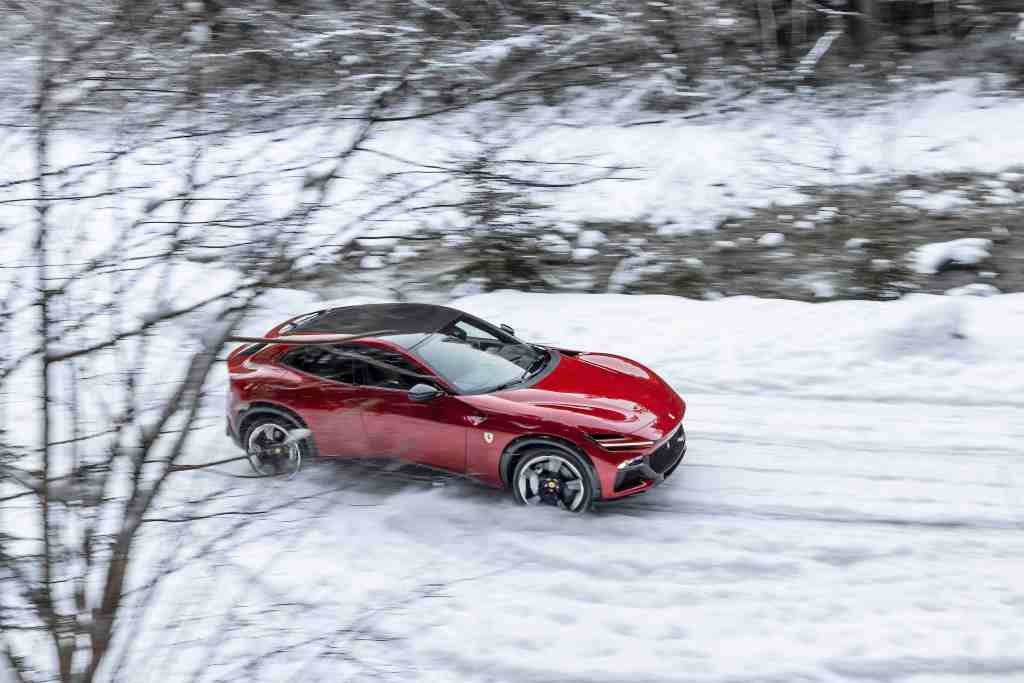
No other SUV, apart from the commanding, cleanly-sketched Range Rover, comes close to looking this good. And although the Purosangue has a raised ride height, all-wheel drive and hill descent, it’s a very different tool to the gentleman farmer’s favourite. It is a supercar with added practicality, not a steroid-injected luxe load-lugger. The DBX and Urus are compromised; the 2,100kg Purosangue isn’t. You really find this behind the wheel.
The Ferrari PR tells us the police are aware of what we’re doing here in Madonna di Campiglio. In other countries that would be a threat. In Italy, on a Ferrari launch, it’s a reassurance. There are lots of speed camera boxes in this region, but only one working camera which the cops move around. ‘They claim not to make a lot of money,’ assures the PR.
The normally-aspirated 6.5-litre 65-deg V12 is a final hurrah. It is derived from the Tipo F140B which powered the legendary Ferrari Enzo hypercar (2002-2004). Mounted mid-front for perfect weight distribution, it absolutely roars with 715bhp arriving at 7,750rpm and 80 per cent of its Kratosian torque available from just 2,100. Other road users are swatted away like flies with even the smallest gap in which to overtake. At a glance, the performance figures are similar to the DBX707: zero to 60 in under 3.3s and a top speed beyond 193mph. But the smoothness and precision of its handling – aided by active suspension and rear-wheel-steer – blows anything else of this shape into the weeds.
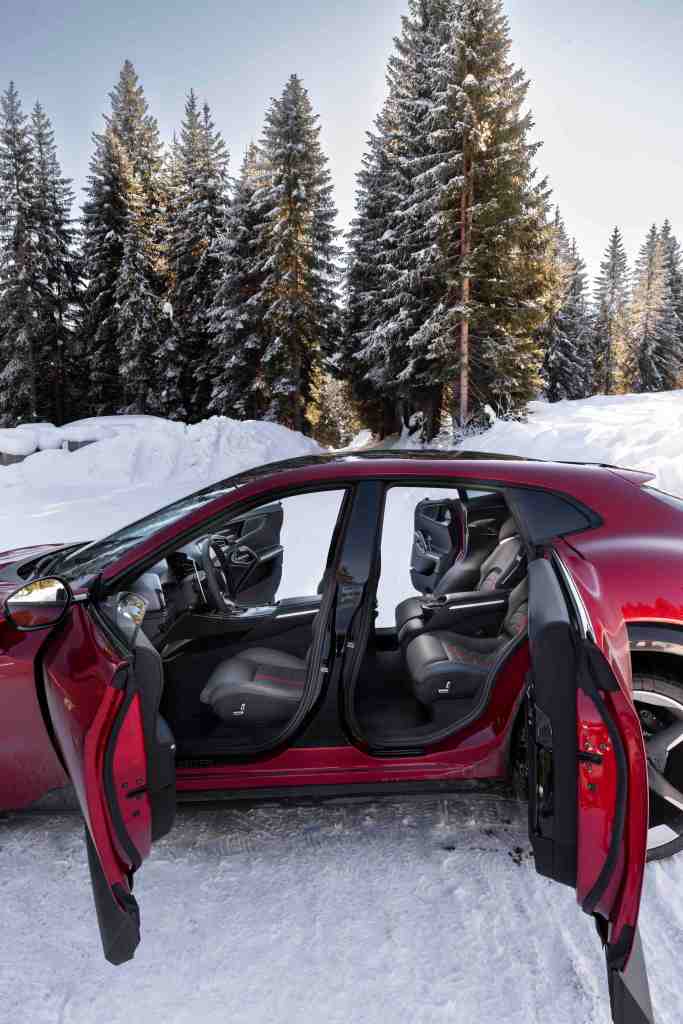
Four-seat Ferraris aren’t new. Enzo Ferrari built road cars to fund his racing department, but when it came to his own wheels he always preferred the marque’s patrician 2+2s to the cramped mid-engined playthings. The 250 and 330 GT, 400 Superamerica and 400i were his personal conveyances, all with four seats. I remain a great admirer of the car the Purosangue replaces, the frankly classier 208mph GTC4 Lusso with its almost-coachbuilt shooting brake silhouette and hatch for skis. What is new is four doors. The Purosangue is the first Ferrari four-door in history, and the rear doors swing out suicide-style like the Rolls-Royce Cullinan. It adds theatre. Ingress and egress and leg room are all impressive, as is the 473-litre boot. The individual rear bucket seats (the first time Ferrari has offered a massage function, by the way) will lie flat should you need maximum cargo space. The volume is roughly a quarter shy of the DBX. Incidentally, I once slept very comfortably in the boot of a bright orange DBX. It’s a long story; I was awoken by a Wiltshire farmer tending his field who was concerned the car might have been stolen and abandoned. The Purosangue is less suited to glamping, but it’ll accommodate if you’re caught short.
The Purosangue cabin is heavily digitised, with a twin-cockpit concept evolved from the SF90 and Roma, and there are disguised touch-and-slide surface switches on the steering wheel. The functions take a little while to get your head around. There were one or two small issues with my test car. For instance, it was convinced someone was sat in the back without a seatbelt when there wasn’t, so bong-bong-bong went the warning sound until I strapped in the phantom passenger. It’s an attractive and comfortable cabin, but for this money I think one might expect more wow factor, and the materials are mainstream compared with the craftsmanship of the Cullinan – the only SUV that gets close on price.
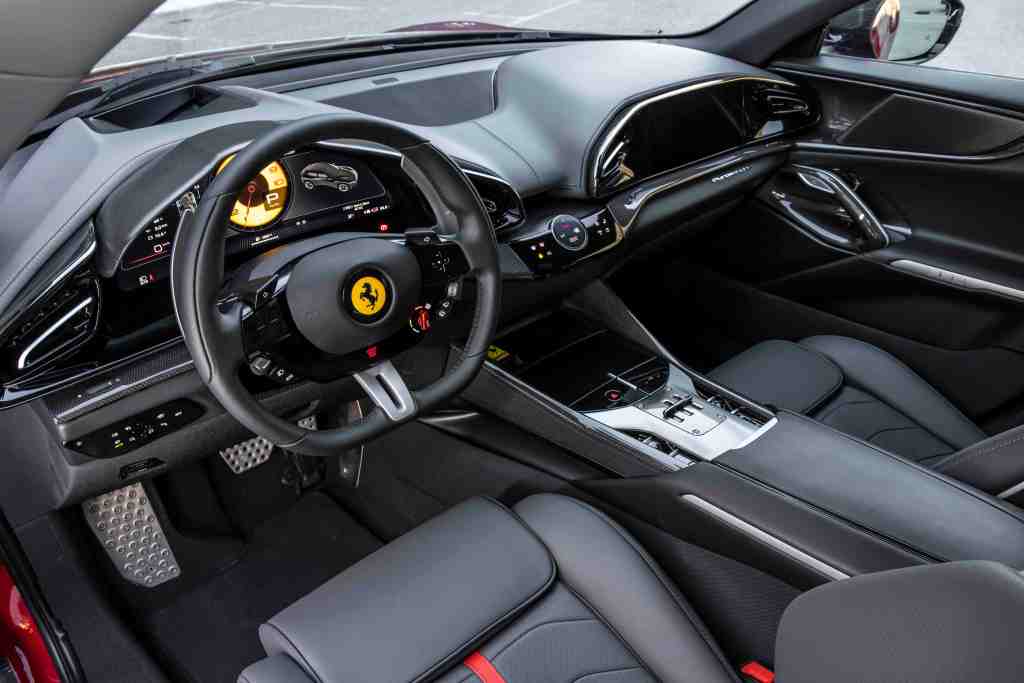
I already mentioned the second most powerful SUV in the world, the Aston Martin DBX707, is £190,000. The massive Rolls-Royce Cullinen, which is a tall limo not a supercar, starts from an artisanal £270,000. The Ferrari Purosangue: £313,120. That’s a ludicrous price tag, even before you’ve been convinced you need another £100,000 of personalisation (want to swap your carbon fibre roof for panoramic glass? That’ll be £12,326. Like your paintwork to have a matte finish? £22,598 please). But demand will far outstrip supply. The waiting list is already 18 months long. Ferrari are masters of maintaining exclusivity. Last year they built 13,000 cars, and the Purosangue will represent no more than 20 per cent of its output.
So, 2,600 Purosangues per year. But this is an unlimited car, unlike such recent and restricted £1.5 million+ examples as the Monza SP1/2 and Daytona SP3. You have to be invited to buy these cars. Ferrari is a bit like Hillary Briss, The League of Gentlemen’s creepy butcher, only selling the ‘special stuff’ to his preferred customers. And to be a preferred customer you need to buy a Purosangue, a 296GTS and an SF90 Stradale. You need to buy the whole set, and you must never, ever complain.
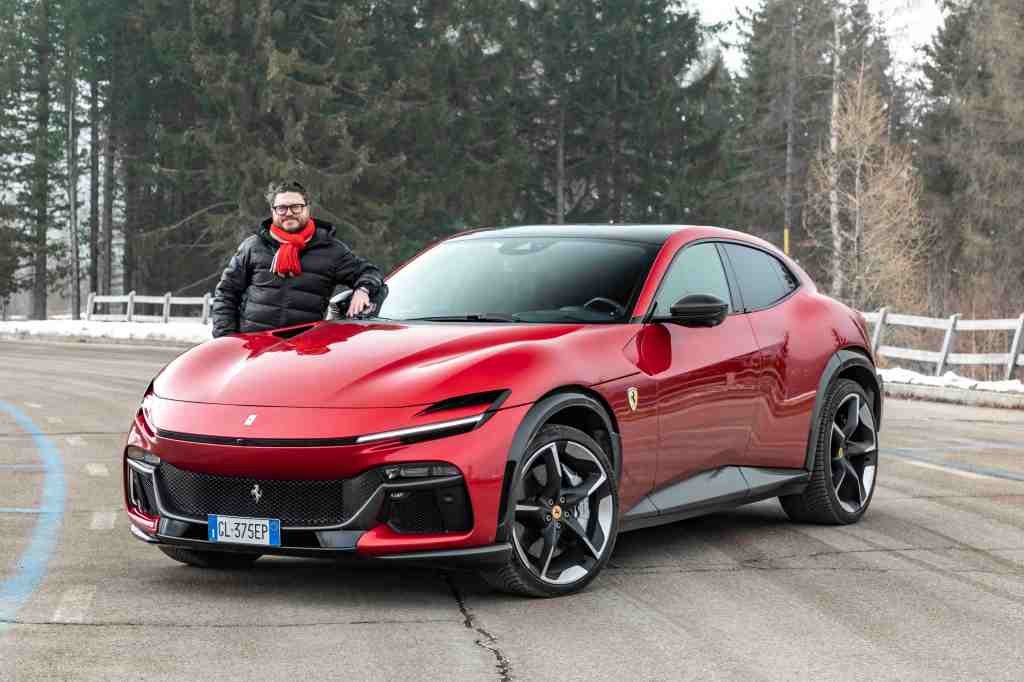
Here’s a foible I spotted on my Purosangue, which had 2,000km on the clock after dozens of test drivers had jumped out. There’s a bit of black plastic in front of the stainless steel gear selector which is so cheap it had already been scratched to hell. I checked some of the other press cars – same thing. You would not, I can assure you, find such a feature within 100m of a Rolls-Royce or Bentley. That’s forgivable with a track-focused supercar, but in this new segment I’m not so sure. Thing is, Ferrari can get away with it. That cheap plastic isn’t born out of stinginess or even laziness, but contempt.
I have a friend who earns a living standing on men’s backs while wearing sharp stilettos. She does the same thing as Ferrari, she’s just honest about it. Ferrari’s business model is basically bondage. And I get it. If I was a multimillionaire with the kinds of insecurities that multimillionaires often have, I would be begging to join the queue for this car and any special stuff they might deign to invite me to purchase.
Even if you took the prancing horse badges off, I’ll says this: it looks like a Ferrari, sounds like a Ferrari and goes like a Ferrari. The Purosangue is the real deal, and sometimes it’s little imperfections that make a masterpiece.

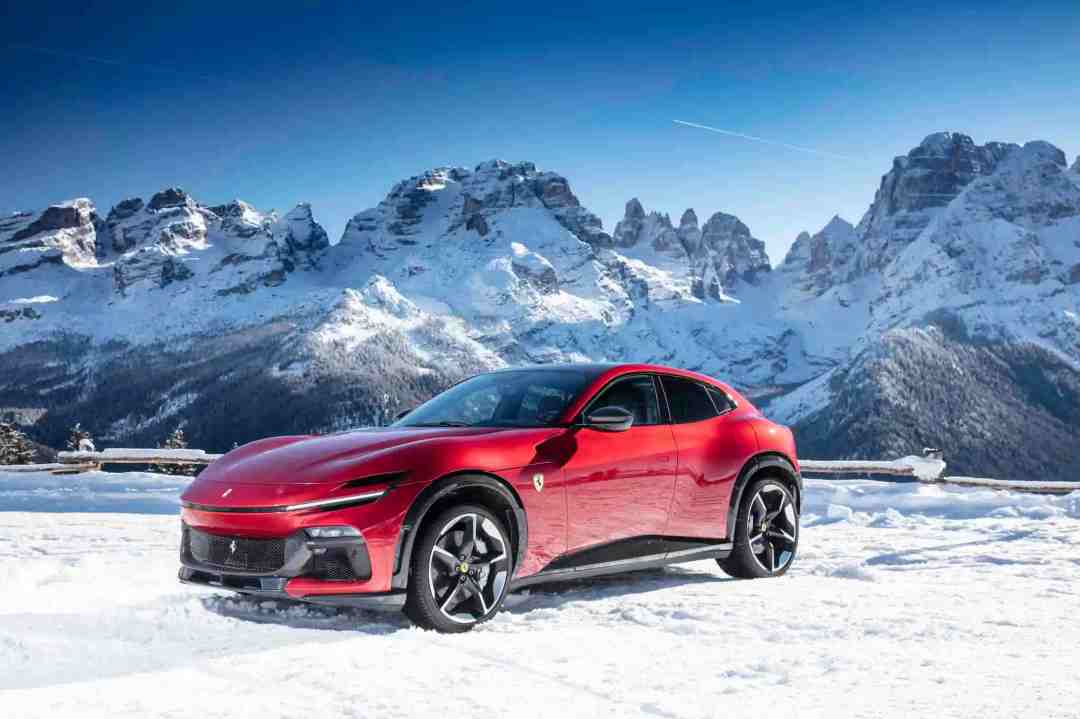
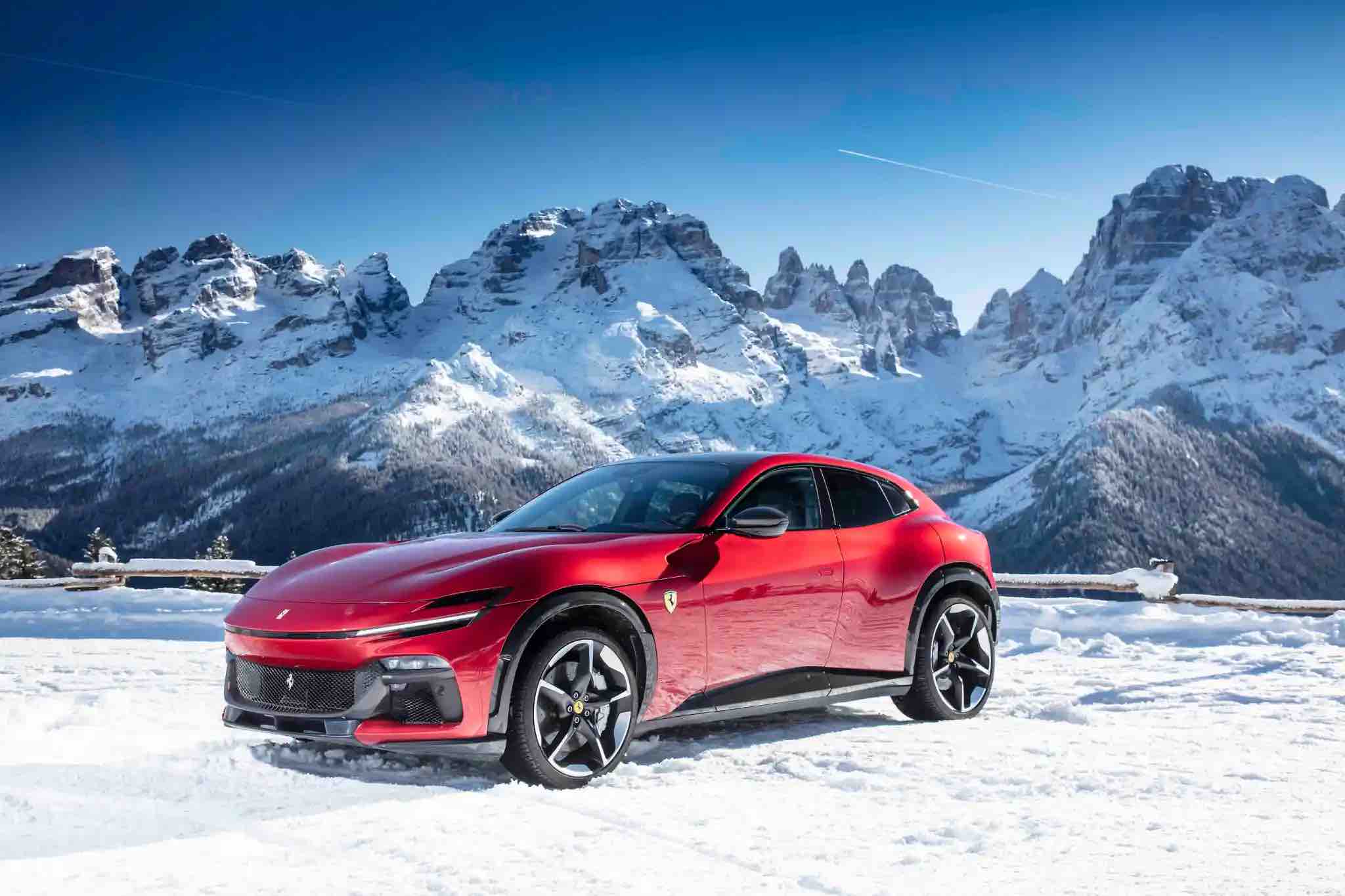
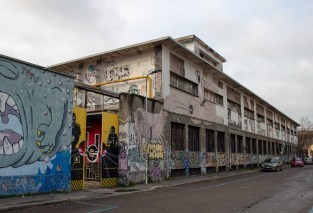



Comments